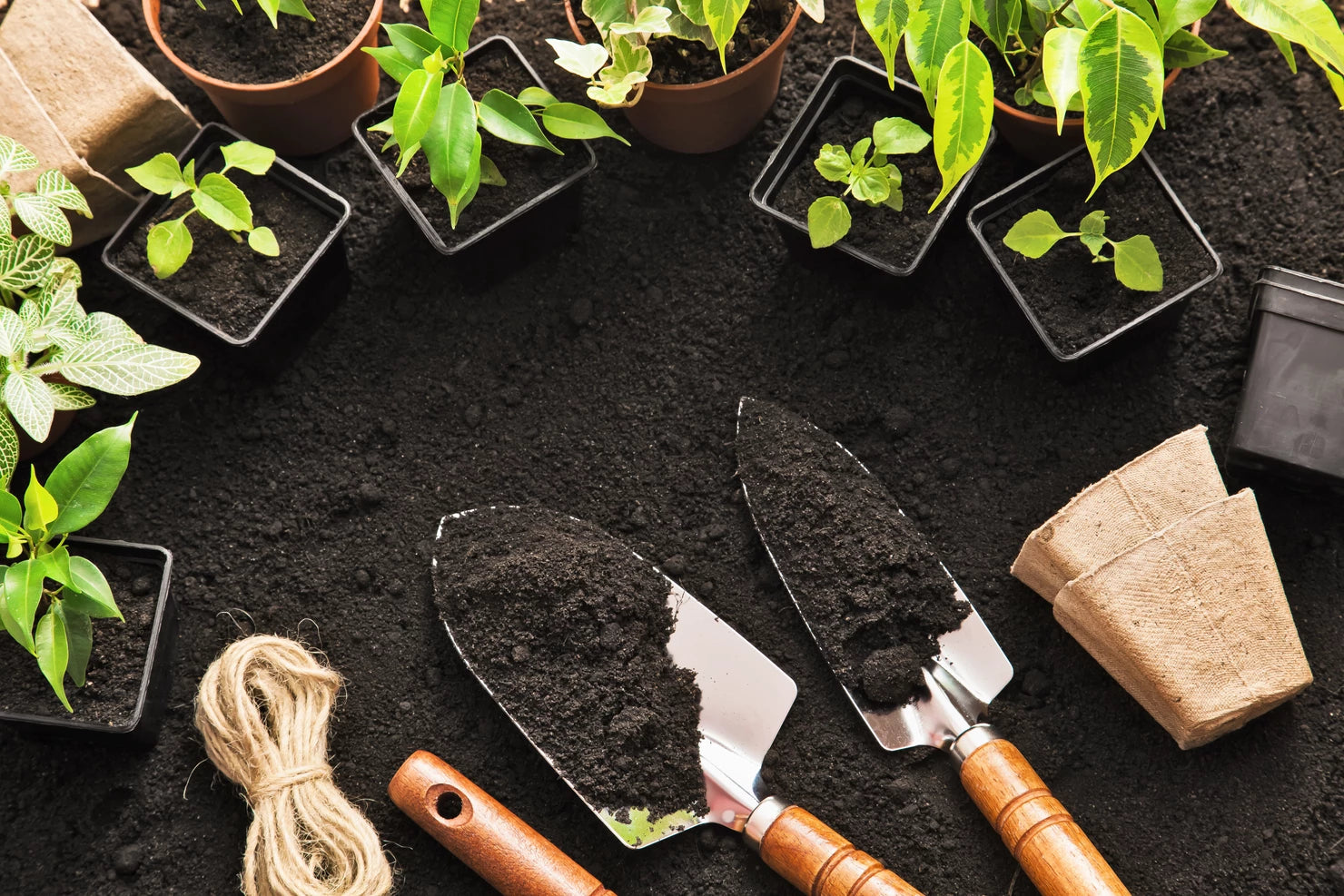The natural artwork of Croton Gold Dust is not only an excellent addition to your home. But also really easy to care for.
People love it for its unique appearance. They are statement pieces, and proper care will maintain their health and vibrance.
This blog will provide a step-by-step Croton Gold Dust care plan to keep it vibrant and lush.
Let’s get started with our Gold Dust Croton care guide!
Part 1. Basics of Croton Gold Dust Plant
The Croton Gold Dust plant is a unique choice for plant lovers. The botanical name is Codiaeum variegatum.
Its slender leaves and bold gold-yellow foliage can make anyone fall for it. Golden yellow spots on lush green leaves give the impression of gold dust sprinkled on them.
This combination of Orange, Gold-yellow, and lush green colors freshen the space around it. Croton plant also has air-purifying qualities. It makes the space around it feel calm and welcoming.

|
No. |
Attributes |
Details |
|
1 |
Common Name |
Croton Gold Dust |
|
2 |
Scientific Name |
|
|
3 |
Plant Type |
Shrub |
|
4 |
Light Exposure |
Bright Direct Light, Bright Indirect Light |
|
5 |
Family |
|
|
6 |
Foliage Colors |
Yellow, Green |
|
7 |
Watering Requirements |
Above Average - Keep lightly moist |
|
8 |
Mature Size |
3–8 ft. tall, 3–6 ft. wide |
|
9 |
Growth Rate |
Slow |
|
10 |
Soil Type |
Moist, well-drained |
|
11 |
Soil pH |
Acidic |
|
12 |
Humidity |
Average (40% - 60%) |
|
13 |
Temperature |
60° - 77°F (16° - 25°C) |
|
14 |
Hardiness Zones |
11–12 (USDA) |
|
15 |
Toxic to Pets |
Toxic to humans and Pets |
Part 2. Ideal Growing Tips for the Croton Gold Dust Plant
The right care and tools will provide a favorable environment for the plant to grow well. Now, let’s look at the right conditions that Croton plants like:
Use the following ideal growing conditions for Croton Gold Dust Plant:
|
Factor |
Ideal Condition |
Adverse Effects |
Additional Tips |
|
Light |
Bright, indirect light |
Pale leaves, loss of color |
Rotate the plant regularly to avoid direct sunlight, especially during intense heat. |
|
Temperature |
65°F to 80°F (18°C to 27°C) |
Extreme cold or drafts |
Avoid cold drafts and direct heat sources. |
|
Humidity |
High humidity |
Drooping leaves, brown edges |
Mist regularly, use a humidifier, or group the plant with other humidity-loving plants. |
|
Soil |
Well-draining, nutrient-rich, slightly acidic to neutral |
Root rot |
Repot every 1-2 years in fresh, well-draining soil. |
|
Watering |
Water when the top inch of soil is dry |
Overwatering or underwatering |
Avoid overwatering, especially in winter. Allow excess water to drain. |
|
Potting |
Well-draining pot, slightly larger than the root ball |
Root rot, poor growth |
Terracotta or ceramic pots are ideal. Avoid plastic pots that retain heat. |
Care Tips for Croton Gold Dust
1- Tip for Fertilization and Spray
Croton Gold Dust can be considered a moderate feeder. Feed with a water-soluble fertilizer diluted to half strength. Feed monthly during spring and summer; don't fertilize in the fall and winter—Mist occasionally with a mild insecticidal soap solution.
2- Tip for Repotting
Repot every 2–3 years. Some indicators for repotting are when your Croton Gold Dust shows roots circling in the pot, grows slowly, or becomes top-heavy. Get a pot only slightly more significant than the one your plant is now living in and fit it with good drainage.
3- Tip for Watering Needs
Watering should be done when the top inch of soil feels dry to the touch. Thorough watering should be done until some water drains from the bottom of the pot. Too much moisture causes root rot and yellowing. Dying off of leaves occurs in a plant that lacks enough water.
4- Tip for Pruning and Maintenance
Pruning should be done in the spring. This season, the plant takes on its shape while allowing for bushier, full growth. Dead or damaged foliage should always be cut out with clean pruning shears to reduce disease exposure.
Wipe the plant's leaves occasionally with a damp cloth to remove dust and increase photosynthesis.
5- Tip for Ideal Locations
Croton Gold Dust prefers whole, indirect light. Grow it near a sunny window but not in direct sun. These plants do well outdoors in tropical climes if planted in dappled shade with some wind protection. Providing adequate light will result in healthy growth, whether indoors or outdoors.

The plant's sap can irritate the skin and eyes. Handle with gloves and keep out of reach of pets and children.
Read more:
But if you are looking for pet-friendly plants? Explore our picks for safe and low-light loving options!
Now, let’s talk about Croton Gold Dust propagation. We will explain how to multiply this beautiful plant using the best possible method.
Part 3. How to Propagate the Croton Gold Dust Plant
Croton Gold Dust propagation is quite a proper exercise. You can multiply your collection or share its beauty with others.
The best and most reliable method for propagating is through stem cuttings. The severed stem can grow roots, thus becoming a new plant. Croton Gold Dust propagation is best when it is actively growing, which means spring or early summer.
It has enough energy this season to commit to the roots and leaves.
Step-by-Step Guide to Propagation of Croton Gold Dust Plant
Step 1: Sharp pruning shears or a sterilized knife
Prepare sharp pruning shears or a sterilized knife. You also need rooting hormone (optional but helpful), a small pot with drainage holes, and a well-draining potting mix.
Step 2: Choose and Cut a Stem
Choose a healthy, mature stem. It should be 4-6 inches long, preferably with several leaves. Make a clean cut just below a leaf node using your cutting tool.

Step 3: Cutting preparation
Remove leaves from the stem's lower 1-2 inches and peel off the bottom skin. Apply the cut end in the rooting hormone.

Step 4: Planting the cutting
Place the prepared cutting in the container, then into the potting mix. Leave part of the leaf to hang over to prevent rotting due to excess water exposure.

Step 5: Water and Create Humidity
Water the soil thoroughly. Over the pot, cover it with a plastic bag or a humidity dome to mimic a moist environment that favors rooting. Place it in bright, indirect sunlight.

Step 6: Repot when the roots appear
Remove the soil after 1-2 weeks and see if roots have appeared. If not, clean the soil and repot it in a bigger pot.

Note: Maintain the soil moist but not soggy until you notice new growth. This is the indicator that the roots have been established well.
There are other methods through which you can propagate your Croton Gold Dust. Let’s briefly overview them.
Alternative Propagation Methods:
Air Layering:
Create a small incision on a stem and wrap it with moist sphagnum moss. Once roots emerge, sever the rooted section and plant it in the soil.
Division:
Carefully separate the root ball into smaller sections for mature, well-established plants. Plant these divisions in individual pots.
With patience and care, propagation of your Croton Gold Dust can be a delightful process. Before we end this article, let’s give some tips for solving common issues.
Part 4. Troubleshooting Common Issues For Croton Gold Dust Care
While growing any plant, you will come across many difficult situations. You must know how to tackle those common issues in Croton Gold Dust care.

Here are some common issues and how to solve them.
Issue 1- Leaf Drop:
Causes: Stress, temperature fluctuations, underwatering, or sudden changes in light.
A sudden leaf drop often signals stress. It typically results from rapid changes in temperature, inconsistent lighting, or improper watering habits.
To minimize this issue, cultivate a stable environment and ensure balanced watering—neither too much nor too little. Should leaf drop occur, inspect for hidden culprits like pests, and tweak your care routine to restore balance.
Issue 2- Yellowing Leaves:
Causes: Overwatering, nutrient deficiency, too much sunlight
Fading or yellow leaves usually means the roots are overwatered and might even be killed. So, it should be well-drained to avoid this.
It also might be due to some nutrient deficiency. Regular fertilizer application during growth periods is essential to replenish the plant's strength.
Issue 3- Brown Leaf Tips or Edges:
Causes: Low humidity, over-fertilization, or underwatering
Brown edges or tips are often the silent complaints of a plant experiencing dry air. Increase the humidity around the plant by misting the leaves or running a humidifier.
You can also set the pot on a pebble tray with water. However, adhere to recommended feeding guidelines to avoid nutrient overload.
Issue 4- Pests and Diseases:
Common pests: Spider mites, aphids, mealybugs, fungal diseases.
Inspect your plant regularly to detect problems before they get worse. Use insecticidal soap or neem oil according to the label to control infestations.
Poor air circulation and too much moisture often encourage fungal diseases. Proper watering and good air circulation can avoid these problems.
Issue 5- Things Not To Do
Here are some common mistakes you should consider in Gold Dust Croton plant care.
- Avoid overwatering
- Don’t expose to direct sunlight
- Avoid sudden temperature changes
- Don’t neglect pruning
- Avoid using chemical fertilizers excessively
Frequently Asked Questions of Croton Gold Dust Plant:
1. Why are my Croton Gold Dust leaves falling?
This is likely due to a combination of factors. Temperature fluctuations, irregular watering, draught exposure, or pest infestation are common causes. Your plant should be placed in a stable environment with constant temperatures, a humid climate, and well-balanced watering to prevent this. Regular inspections for pests should be conducted to exclude infestation.
2. Can I grow my Croton Gold Dust outdoors?
Yes, but only if you are lucky enough to live in a tropical climate. USDA Hardiness Zones 11-12 have a suitable environment for Croton Gold Dust propagation. It’s because these plants prefer warm, moist environments. So, it will grow outdoors in these zones.
But in cooler climates, it's best grown indoors. Indoors, you can more easily control environmental factors.
3. How can I make my Croton Gold Dust bushier?
Bushy growth needs a little strategic pruning. Pinching back the ends of stems induces lateral branching, giving an even fuller and more compact plant. Prune in spring or early summer, when growth is most substantial.
4. What water should I use on my Croton Gold Dust?
Opt for distilled water or rainwater. It will avoid the mineral build-up often caused by tap water. If tap water is your only option, allow it to sit overnight. After that, dissipate chlorine before using it. This small step can significantly benefit your plant’s health.
Want to bring the beauty of the Croton Gold Dust home?
Explore the products mentioned in this blog!
- Croton Gold Dust Plant
- High-quality potting mix
- Planters and pots
- Moisture Meter and gardening toolkit
- Natural Balanced Fertilizer
- BIOS Ultimate Pesticide
Conclusion
Croton gold dust plant can elevate your indoor space like nothing else. Its vibrant colors and unique foliage make it a must-have.
You can grow this plant for years with a proper routine for Croton Dold Dust care. Just provide it with bright, indirect light and warm, humid conditions.










